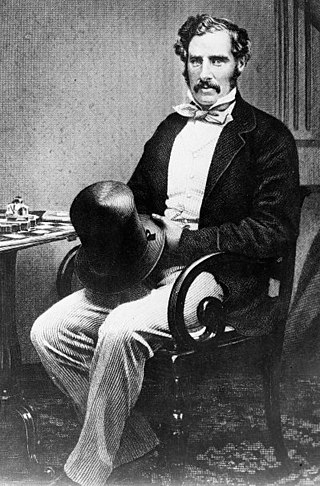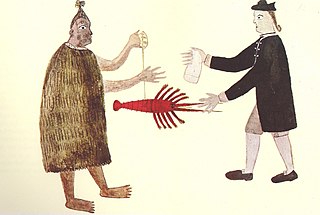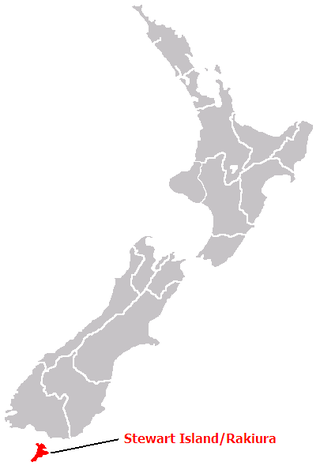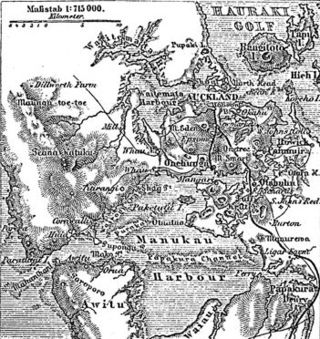
Sir George Grey, KCB was a British soldier, explorer, colonial administrator and writer. He served in a succession of governing positions: Governor of South Australia, twice Governor of New Zealand, Governor of Cape Colony, and the 11th premier of New Zealand. He played a key role in the colonisation of New Zealand, and both the purchase and annexation of Māori land.

The provinces of the Colony of New Zealand existed as a form of sub-national government. Initially established in 1846 when New Zealand was a Crown colony without responsible government, two provinces were first created. Each province had its own legislative council and governor. With the passing of the New Zealand Constitution Act 1852 the provinces were recreated around the six planned settlements or "colonies". By 1873 the number of provinces had increased to nine, but they had become less isolated from each other and demands for centralised government arose. In 1875 the New Zealand Parliament decided to abolish the provincial governments, and they came to an end in November 1876. They were superseded by counties, which were later replaced by territorial authorities.

Edward Gibbon Wakefield was a British politician in colonial Canada and New Zealand. He is considered a key figure in the establishment of the colonies of South Australia and New Zealand. He also had significant interests in British North America, being involved in the drafting of Lord Durham's Report and being a member of the Parliament of the Province of Canada for a short time.
In the British Empire, a self-governing colony was a colony with an elected government in which elected rulers were able to make most decisions without referring to the colonial power with nominal control of the colony. This was in contrast to a Crown colony, in which the British Government ruled and legislated via an appointed Governor, with or without the assistance of an appointed Council. Most self-governing colonies had responsible government.

New Munster was an early original European name for the South Island of New Zealand, given by the Governor of New Zealand, Captain William Hobson, in honour of Munster, the Irish province in which he was born.

The Republic of Maryland was a country in West Africa that existed from 1834 to 1857, when it was merged into what is now Liberia. The area was first settled in 1834 by freed African-American slaves and freeborn African Americans primarily from the U.S. state of Maryland, under the auspices of the Maryland State Colonization Society.

The constitution of New Zealand is the sum of laws and principles that determine the political governance of New Zealand. Unlike many other nations, New Zealand has no single constitutional document. It is an uncodified constitution, sometimes referred to as an "unwritten constitution", although the New Zealand constitution is in fact an amalgamation of written and unwritten sources. The Constitution Act 1986 has a central role, alongside a collection of other statutes, orders in Council, letters patent, decisions of the courts, principles of the Treaty of Waitangi, and unwritten traditions and conventions. There is no technical difference between ordinary statutes and law considered "constitutional law"; no law is accorded higher status. In most cases the New Zealand Parliament can perform "constitutional reform" simply by passing acts of Parliament, and thus has the power to change or abolish elements of the constitution. There are some exceptions to this though – the Electoral Act 1993 requires certain provisions can only be amended following a referendum.

Major General Robert Henry Wynyard was a British Army officer and New Zealand colonial administrator, serving at various times as Lieutenant Governor of New Ulster Province, Administrator of the Government, and was the first Superintendent of Auckland Province.

The independence of New Zealand is a matter of continued academic and social debate. New Zealand has no fixed date of independence from the United Kingdom; instead, political independence came about as a result of New Zealand's evolving constitutional status.

The New Zealand Constitution Act 1852 was an Act of the Parliament of the United Kingdom that granted self-government to the Colony of New Zealand. It was the second such Act, the previous 1846 Act not having been fully implemented. The purpose of the Act was to have constitutional independence from Britain. The definition of franchise or the ability to vote excluded all women, most Māori, all non-British people and those with convictions for serious offences.

New Leinster was a name given to the Stewart Island in the Royal Charter of November 1840, which stated the division of New Zealand into three parts. The division only held a geographic significance. In the 1846 New Zealand Constitution Act, the area known as New Leinster was incorporated into then established New Munster Province. It was named after Leinster, one of the provinces of Ireland.

The human history of the Auckland metropolitan area stretches from early Māori settlers in the 14th century to the first European explorers in the late 18th century, over a short stretch as the official capital of (European-settled) New Zealand in the middle of the 19th century to its current position as the fastest-growing and commercially dominating metropolis of the country.

The New Zealand Constitution Act 1846 was an Act of the Parliament of the United Kingdom intended to grant self-government to the Colony of New Zealand, but it was never fully implemented. The Act's long title was An Act to make further Provision for the Government of the New Zealand Islands, and it received the royal assent on 28 August 1846.
The following lists events that happened during 1853 in New Zealand.
The following lists events that happened during 1852 in New Zealand.
Early New Zealand Books (ENZB) is a project from the library of the University of Auckland, New Zealand, launched in 2005, that aims at providing keyword-searchable text of significant books published about New Zealand in the first two-thirds of the nineteenth century. It also includes the subsequently published memoirs, journals and correspondence of people active in this era. The project has been funded and managed by the University of Auckland Library and for many years was freely available on the internet.

South Island nationalism refers to a nationalist movement in the South Island of New Zealand.

The Colony of New Zealand was a colony of the United Kingdom of Great Britain and Ireland that encompassed the islands of New Zealand. The colony was proclaimed by its British settler population in 1841, and lasted until 1907, when the Dominion of New Zealand was established. The sovereignty of Britain over the islands was initially nominal, before becoming substantive upon the conclusion of the New Zealand Wars, after which Māori sovereignty was essentially overcome. The power of the British Government was vested in the governor of New Zealand. The colony had three successive capitals: Okiato in 1841; Auckland from 1841 to 1865; and Wellington from 1865, which continues as the capital of New Zealand today.
The first New Zealand Legislative Council, also known as the General Legislative Council, was established in 1841 when New Zealand was created as a Crown colony separate from New South Wales. The Legislative Council consisted of the governor, the colonial secretary, the colonial treasurer, and senior justices of the peace; all members were appointed. From 1848, there were additional provincial Legislative Councils for New Ulster and New Munster. The general Legislative Council had twelve sessions, and the first ten were held in Auckland while the last two were held in Wellington. In May 1852, an act provided for two thirds of the membership of the provincial Legislative Councils to be elected. Elections for the New Ulster Province had already been held when news was received that the New Zealand Constitution Act 1852 had been passed by the Parliament of the United Kingdom. No meeting of the elected members was ever called. The New Zealand Constitution Act 1852 disestablished the Legislative Council when writs for the first election of members of the New Zealand House of Representatives were returned. The original Legislative Councils ceased to exist in September 1853.















